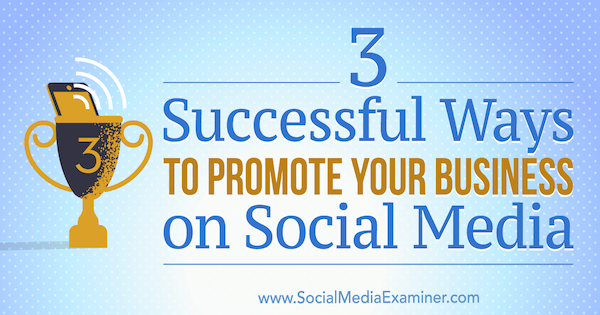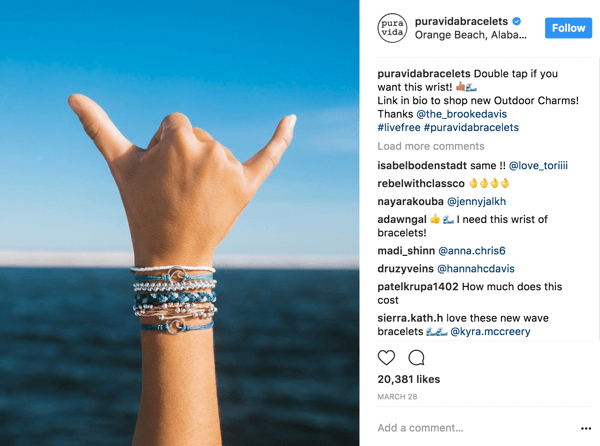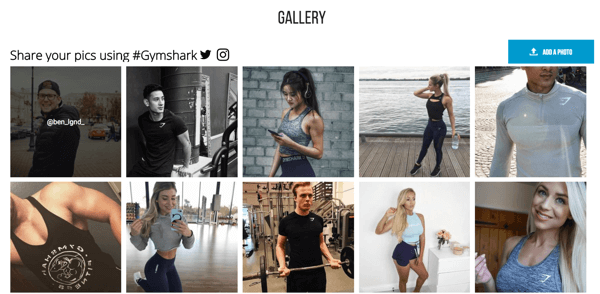
Wednesday, 1 August 2018
Tuesday, 31 July 2018
Monday, 30 July 2018
6 Tips on How to Engage Your Customers Through Social Media Strategy
6 Tips on How to Engage Your Customers Through Social Media Strategy
It can be easy for you to let days, or even weeks, fly by without publishing a new Facebook post or tweet. Don't.

Image credit: oatawa | Getty Images
Once upon a time, the only online presence a startup needed to worry about was a website. Not long after, a Facebook business page became another virtual necessity. Next came Twitter, where news is so often reported -- and even made --before anywhere else. And there's more: Nowadays, if you’re a business that relies on visual branding, an Instagram account is a must. Moreover, if your customers are B2B, LinkedIn is a platform that’s only growing in importance.
An effective social media strategy can be a boon to virtually any startup or business. But, where do you start? Based on my experience advising entrepreneurs on how building an effective social media strategy can increase the value of their online business, here are six tips to get your social media strategy on the right track.
Stick to a publishing schedule.
When it comes to developing a successful social media strategy, consistency is essential. Entrepreneurs are busy people. It can be easy for you to let days, or even weeks, fly by without publishing a new Facebook post or tweet. That’s why a commitment to scheduling is so important. If your audience members can’t count on your business to deliver relevant content in a timely manner, you'll find it difficult to keep them engaged.
Luckily, there is an abundance of social media manager apps out there to help keep your content calendar on track. Two of the most established and powerful are Hubspot and Buffer. Both handle scheduling across a number of platforms and offer "forever free" plans so you can get your social media calendar up and running at no cost.
Maintain a consistent voice.
For an effective social media strategy, timing is not the only area where consistency is important. Vital to your brand’s health is uniformity in voice and messaging across all your channels. The brand persona on your website -- in emails and on social media -- needs to be kept consistent; otherwise, you risk confusing and alienating your audience.
Maintaining a consistent voice may be easy when you’re a solopreneur or you're working with a small team; but as your business grows, you need to be vigilant to ensure your brand stays on message. This is particularly true when you look to outsource your social media and content marketing.
Karl Kangur, managing director of MRR Media, a content marketing agency for SaaS businesses, places a strong emphasis on the importance of consistency: “I stress to each of our clients when they come on board how important it is to have a clearly defined brand persona," he told me. "We work together during the onboarding process to achieve this.
"This is vital to our mutual success, as the brand persona informs every piece of content we create: from blog posts and tweets, to Facebook posts and email marketing.”
Show your (brand’s) personality.
Consistency is important, but "consistent" doesn’t have to mean boring. Posting on Twitter, Merriam-Webster has even found a way to make the dictionary entertaining. Of course, your own brand’s personality needs to be tailored and authentic to the audience you are trying to reach. Consider giving your followers a peek behind the scenes of your business. Introduce your team members and show customers who and what makes your company tick.
Another strategy that works well for many brands is to have a “corporate” Twitter account that is informational in nature alongside the founder’s and team members' personal accounts. While still promotional, what you write there can be more opinionated. An excellent example of this strategy in action is content posted by Elon Musk and Tesla.
Content is king.
When it comes to social media marketing, the temptation may be to focus too heavily on quantity and lose sight of quality. While apps like Buffer and Hubspot make it easy to schedule posts and tweets, don’t give into the temptation to just plug them into your content calendar and have them shuffle and repeat.
For your social media strategy to be successful, your audience members must feel they have an authentic connection to your brand. To achieve that kind of connection, there is simply no substitute for sharing high-quality, fresh and engaging content in a timely manner.
Be selective.
Creating quality content consumes significant time and resources. With that in mind, don’t feel obligated to have a presence on every platform. Focus on crafting superior content for the platforms most closely aligned with your business’s customer segment. While Facebook and Twitter might be considered almost mandatory at this point, think carefully about which additional channels you want to take on.
The reason is that each platform you add to your social media strategy means additional responsibility to create high-quality content unique to that channel. If you’re a fashion brand, perhaps you can’t do without Instagram or Pinterest, but do you need to be creating content for LinkedIn? Focus your efforts on the platforms most relevant to your business.
Listen; don’t just speak.
One of the unique strengths of social media is that it gives brands a platform to engage in a dialogue with their audience. This is a big part of what makes social media social; listening to your audience is just as important as speaking to them.
Many businesses discover that their customers won’t hesitate to share their experience with a brand -- positive or negative -- on social media. How a brand responds to customer compliments, questions or complaints will go a long way toward determining how successfully they manage to engage their customers through social media.
Final thoughts
Whether you’re an established social media maven or your business is just now embarking on its social media journey, evaluating and reconsidering your strategy using the six tips outlined above will help set the course for an effective social media strategy.
Sunday, 29 July 2018
3 Successful Ways to Promote Your Business on Social Media
3 Successful Ways to Promote Your Business on Social Media
Looking for new ways to put your brand in front of social media users?
Wondering what’s working for others?
It’s possible to keep your social posts focused on your brand and avoid seeming self-centered and overly promotional.
In this article, you’ll discover three ways to talk about your brand on social more often without turning people off.

3 Successful Ways to Promote Your Business on Social Media by Aaron Orendorff on Social Media Examiner.
#1: Turn to Micro-Influencers Who Share Your Brand Aesthetics
What’s wrong with branded content in the first place? “Most branded content is advertising under a thin layer of information or entertainment. Scratch the paint, find an ad. It’s the brand putting itself first,” Andy Crestodina explained. In other words, branded content is self-serving, and your audience knows it.
The solution: Don’t create it yourself. Instead, go the way of influencers. Unfortunately, here’s where terminology can get you in trouble. Influencer marketing is normally presented as old-school networking dressed up in fresh, digital clothing. Build relationships. Add value. Create a roundup or two. Then reach out for links and shares.
When it comes to branded content, however, influencer marketing is far more akin to advanced product placement. Step one: Get your product or service into the hands of someone your audience trusts. Step two: Get that person to create content around it. Step three: Integrate their content into your platforms.
This article on how to set up a social influencer marketing campaign provides fantastic guidance for getting off the ground. But what exactly does this approach look like in action?
Founded six years ago, Pura Vida Bracelets evolved from a college graduation trip to Costa Rica into a multimillion-dollar ecommerce empire. Alongside a host of tools, their marketing has revolved heavily around influencers.

In this paid influencer post, Pura Vida was able to leverage Rachel Brathen’s (@yoga_girl) 2.1 million followers and track ROI through an exclusive coupon.
As co-founder Griffin Thall explained to me, “Our team digs through Instagram to find creators and influencers that fit our brand’s vibe. We communicate via email and feel them out for ‘trade for product’ or paid collaboration in return for photos, posts, IG stories, IG lives, account take-overs, and giveaways.”
That approach has yielded massively popular posts on influencer accounts as well as on Pura Vida’s own.

With content creators whose audiences are fewer than 50K, Pura Vida trades ‘product for photos’ to leverage micro-influencers.
And it’s the simplicity of Thall’s explanation that offers the most hope for branded content. By seeking out creators with fewer than 50K followers or influencers with more than 500K, you can scale your approach to fit your business.
#2: Give People a Way to Share a Laugh at You
If you’re going to create and host branded content, there’s one ingredient that unites nearly all of the top performers: humor.
This isn’t just because everyone likes to laugh. In his book Contagious: Why Things Catch On, Jonah Berger discusses the close connection between physiological arousal and sharing. Simply put, pumping hearts lead to busy fingers (digitally speaking). As surprising as it might sound, “Funny content is shared because amusement is a high-arousal emotion.”
Denny’s Tumblr is an excellent example of how to make funny work. From bizarre pictures of horses with their midsections Photoshopped into an English muffin to blogs titled “How do you kill a pancake successfully? I need to know for research purposes,” their content communicates that they don’t take themselves too seriously and you shouldn’t either.

Denny’s Facebook Live Q&A with a pancake was pure branded gold.
Along the same golden lines was Hamburger Helper’s Watch the Stove campaign. More than just humorous, Watch the Stove brought on serious musical heavyweights, and as General Mills’ Senior Marketing Partnership Planner Ashley Wright put it, “We tried to take away any corporate aspect of it.”
Humor is a great way to make it feel like your branded content isn’t, well, branded.
#3: Integrate Brand Advocates’ Social Content Into Your Marketing
Much like influencer marketing, user-generated content (UGC) has been around for years. However, brands have only recently begun to systematically integrate it into their marketing.
Why? Because from sales to social, UGC is conversion gold.
In How Companies Will Use Social Media In 2017, Ryan Holmes points out that UGC “taps into users’ basic impulse – the one at the heart of social media’s appeal in the first place – to create and engage, rather than sit on the sidelines passively.” Campus Protein, for instance, does this masterfully by soliciting, sharing, and regularly posting content made by customers.

This UGC was submitted by a fan, and distributed on a host of Campus Protein’s accounts and added to their on-site checkout process.
But sharing isn’t all Campus Protein does. Having collected over 1,800 reviews and countless images through their hashtag #teamcp, they’ve taken all that UGC and integrated it into their product pages as well.
With their hashtag #Gymshark, Gymshark takes a similar approach and uses UGC in top-of-funnel and bottom-of-funnel content.
The reason for this integration comes straight from the data. According to Yotpo’s benchmark study of more than half a million online shoppers, people who see UGC are 166% more likely to convert than those who don’t. In essence, when you leverage UGC in branded content, you make the customer the hero, instead of the company.

Gymshark mixes their in-house content with UGC both off-site (such as on Facebook and Instagram) as well as on-site to reach new customers through their existing customers’ connections.
Generating UGC comes down to a handful of intentional steps. First, actively invite people to provide UGC not just on social but especially through transactional emails like order confirmations. Second, make submitting UGC as easy as possible with dedicated hashtags. Third, use UGC tools like Yotpo or Engage Hub to collect reviews, ratings, photos, and customer stories.
Remember, you’re not your best salesperson. Your customer is.
Conclusion
The truth is, despite the explosion of branded content, few have overcome its fundamental problem: Everybody hates branded content.
For example, Beckon’s study “Marketing Truth or Marketing Hype?” found that “while branded content creation is up 300 percent year over year, consumer engagement with that content is totally flat.” According to their numbers, a mere 5% of all branded content accounts for 90% of total engagement.
That’s an uncomfortable ratio. But it also presents an opportunity. If 5% fuels 90%, then getting branded content right has huge payoffs.
Thankfully, it’s no secret what makes content lovable: for people, by people, that entertains and educates. In the words of the 20th century’s patron saint of advertising, David Ogilvy: “You know, you can’t bore people into buying your product. You can only interest them in buying it.” The same thing is true today.
Friday, 27 July 2018
4 Facebook Poll Tools for Your Social Media Strategy
4 Facebook Poll Tools for Your Social Media Strategy
If you have a business and an audience on Facebook, you probably understand the importance of engaging your fan base. 

An effective social media strategy should include different ways to interact with your customers and prospects.
But here’s a question for you – are you utilizing your social media presence to its fullest potential?
Well, chances are you’re missing the mark by underutilizing at least one tool at your disposal – Facebook polls.
But you may be wondering why should you bother spending time doing all the work that comes along with polling your audience?
Why you should use polls in your social media strategy
Well, consider this:
- Successful Facebook pages incorporate polls and contest into their overall social strategy. According to Econsultancy, the social teams behind Coca-Cola and Starbucks frequency pose questions to their audiences. According to newBrandAnalytics, “some companies have already ditched surveys” and are now turning to social feedback to in an effort to understand customer experience.
- Reaching your business goals hinges on a deep understanding of your customers and prospects. And through Facebook, you have access to a large massive audience of individuals who might not usually complete “traditional” surveys that pop up on websites or that are sent through email.
- There’s no use in worrying about “bothering” your fans – they’ve already demonstrated their interest by “liking” your page. So why not give them an opportunity to get involved and give you feedback on existing products or planned product feature releases, the types of content and service they’d like to see on your page as well as monitor customer satisfaction and gather information on other topics relevant for your business?
Now that you understand the arguments in favor of polling your audience, let’s get into the HOW-TO and explore the tools available for the task, from the most basic to those with a wider range of features.
Before we dive into the list, I want to point out that you can always choose to “poll” your audience by posting a question as a status update as depicted below.
But if you plan to perform more thorough research it’s recommended that you use one of the tools specifically developed for the job.
Here’s the first tool in the list:
Tool #1. Poll
Poll claims to be “most widely used” polling app and, overall, it has a nice feature set, which includes the ability to create an ad-supported poll for free, feature a poll as a tab on your profile and access data about your respondents. Some of the premium features include the option of removing ads on the app’s page and allowing respondents to add comments while answering your questions.

This app also saves your polls and lets you view them at a later time and, if you wish, to poll your audience once again. Two other interesting premium features are advertising the poll through its own system and requiring poll participants to “like” your page before voting. Premium features can be unlocked for $19 per poll or for an annual payment of $99.
Tool #2. Polls for Facebook
Polls for Facebook is another simple poll app that also claims to be the “the most popular.”
Among other things, the poll creator can choose the question format (multiple-choice, text, only one correct answer, multiple correct, add drop-down answers etc.), modify their appearance (e.g. by adding images), and send personalized thank-you notes to the poll’s participants (available only in the premium version).
Unlike the first app in the list, one minor drawback is a lack of extensive a documentation and instructions, so to get a real feel for the app, it’s best to just give it a trial.
Tool #3. Polldaddy2
The creators of Polldaddy are the same folks who are behind WordPress, so you can rest assured of its technical quality and data security. The app has rich functionality and lets its users create polls, surveys and quizzes which can then be shared on websites and through email, Facebook, and Twitter.
Polldaddy allows its users to customize the look and feel of their polls (e.g. by adding an image or video, customizing CS), modify question format (choosing from 14 question types, specifying a set of possible answers), set privacy options, and analyze response data with the help of its powerful filter and reporting capabilities (e.g. exporting raw data into Excel, PDF, CSV, Google Docs, and XML format).
Tool #4. Cup.li
The Cup.li app is both comprehensive in its design and user-friendly at the same time.
Engineered for “deep marketing analysis”, it matches the functionality of others apps, but also lets you create a private interview, select question format (one answer, some answers, matrix), target respondents by age, gender, marital status, and education, and sort respondents into groups, and enable sharing.
Tips and resources
If you’ve been on the fence about running polls on your Facebook page, hopefully this overview has shown you that there are several available tools to choose from, one of which is certainly guaranteed to simplify the process of gathering valuable insights from your audience.
If you’re unsure about what to ask your fans or how best to structure your questions, here are a few resources you mind find of value:
- Case studies of social media marketing (with the use of polls) from KIA (well-known car company), o2(UK provider of mobile services), and Hapa (a former Nestle Brand).
- Article titled “How to Supercharge Your Social Media Presence With Online Surveys” on the Social Media Examiner Blog.
Finally, although social media websites have created new ways to “listen”, understanding what consumers are thinking about and why they are behaving in a certain way is challenging. Seemingly minor details like question wording can have a significant impact on the results of a particular poll.
So keep in mind that individuals and businesses alike should have several tools in their sales and marketing arsenal and utilize a combination of channels and techniques, understanding the pro’s and con’s of each.
Thursday, 26 July 2018
How To Create Facebook Lead Ads That Convert
How To Create Facebook Lead Ads That Convert
March 22, 2018
Larry mentioned them in his list of 10 CRO Truth Bombs. WordStream clients are using them to corral leads in droves. They’re cheap. They’re effective. The targeting options are so vast and precise that finding new customers is easier than bullseyeing womp rats in your T-16 back home.
I’m talking about Facebook lead ads.

If you’re not familiar with them, lead ads are Facebook’s answer to the jaw-dropping amount of time the average person spends on his or her mobile device. It’s no secret that conversions from paid channels tend to take a hit on mobile, so the Zuck and crew decided to eliminate one of the most prohibitive steps for would-be converters: visiting your website.
Instead, with lead ads, you just choose from the Cheesecake Factory-esque menu of targeting options, create a lead form, and watch the (significantly cheaper) scorching hot leads roll in. They can be used to acquire all sorts of information, from potential consumers anywhere in the funnel.

And the best part? Contact info collected through lead ads can be used to create new audiences – both custom and lookalike – allowing you to adjust your paid efforts based on where a prospect falls in your funnel or find new, similar prospects.
Sold yet? Of course you are.
But before I delve into how you’re going to make your Facebook lead ads irresistible, here are the six simple steps you’ll need to take in order to create your first one (assuming you’ve already got a Facebook Business Manager account).
Facebook Lead Ads For Dummies

Once you’ve signed into your Business Manager account, navigate over to Power Editor.

Click the “+Campaign” button on the top left hand side of your screen to open a laundry-list of prospective campaign goals. While many will be familiar (and some more useful than others), the one you want is titled “Collect leads for your business.”

Now, let’s get granular. Choose your desired audience, targeting parameters, placements, budget, and scheduling. Discussion of this warrants a post of its own, so I won’t try to condense a thousand words into twenty. Suffice to say you know your business, your goals, and your target demo better than I do. Get everything calibrated and proceed.
The Power Editor UI will prompt you to create a new lead form or duplicate an existing form. Since we’re operating under the assumption that you haven’t done this before, you’ll only be able to select the former. For future reference, though, be sure to recycle forms when appropriate, but don’t use a single form across every lead campaign you run (especially when you’re serving lead ads to those already in your funnel).

Next, add a context card. They’re “optional,” but trust me: you want to make one. Essentially, a context card is the step between somebody seeing your lead ad and the formfill itself. Take your time crafting the copy that goes on your context card (or hire a professional). Make sure you distill your message down to the most concise version: explain what you’re offering, who you are, and why whomever is seconds from giving you their precious contact information should do so. Nothing more.

Once you’ve finished the context card, it’s time to put together your lead form itself. You’ll be given more possible fields than you’ll know what to do with…

… and that’s okay. Because for your first lead ad, we’re going to focus on just two of them: email address & full name. Why full instead of “first” and “last” as separate fields? The more boxes a prospect has to complete, the less likely they are to convert. You can use a little bit of Excel wizardry after you’ve got the data to parse names into separate columns.
Finally, complete the privacy policy and disclaimer and you’re ready to rock.
Optimizing Your Facebook Lead Ads
The good news: you know how to make a Facebook lead ad!
The bad: your competition does, too.
Because your competitors are plastering your prospects’ timelines with ads, it’s important that yours stand out. Now that you know how to make a run-of-the-mill Facebook lead ad, it’s time to learn how to make an incredible (read: high converting) one.
Optimizing Targeting for Facebook Lead Ads: Lookalike A Paying Customer
Create lookalike audiences using customers, not prospects.
If you make a lookalike audience of everyone who submits, your reach will be wider, sure, but it’ll also be less qualified. By creating lookalikes of your converters instead of everyone who has submitted a lead, you’re building a more accurate profile of the sort of person who makes a purchase or becomes a client.
This model is inherently more valuable to your business than a rough estimate of the type of person who might possibly could maybe one time almost sort of be interested in what you have to offer. Niche-ing down is a good thing. Remember that.
Facebook Has More Targeting Options Than Members…
Use them to your advantage!
Get as granular as possible with your campaigns and ad sets, and don’t be afraid to experiment. Personally, I like to take any customer data I can get my hands on and look for patterns. From there, you can begin overlapping the traits you uncover using the virtually limitless targeting options available to you. Things to look for include:
- Job titles
- Education
- Relationships
- Age
- Hobbies
- Average income
- Language proficiencies
- Entertainment
Through all of these and more, you can create highly targeted campaigns outfitted with lead ads that speak directly to the traits you’ve identified.
Are you a drivers’ ed teacher looking for new students? Consider targeting parents in higher-income areas (driving lessons don’t come cheap). Flower shop or purveyor of fine chocolates? Seek out people in new relationships, show them a lead ad, and get ‘em on your email list.
Duplicate Audiences Are A Waste Of Money
Having a fat stack of ideas out the gate is great. Know what isn’t? Trying to test them all on the same audience at once. Patience is key.
According to Facebook, attempting to target the same audience with multiple lead ad campaigns can result in “under-delivery issues.”
If you’re following the advice above (ratcheting down on those lookalike audiences) and leveraging the rest of Facebook’s robust targeting options to your advantage, the initial reservoir of some-odd billion people with Facebook accounts has been dammed up and reduced to a faucet’s trickle. Your ads are only serving to small, qualified audiences. Under-delivery isn’t an option, folks!

Your Customers Sleep. Your Ads Should, Too
If you’re selling a SaaS product to large businesses, I doubt your potential customers are up at three in the morning on a Tuesday. But things change if your offering is meant for the garage-based startup, or you’ve cornered the market on glowy, pulsing rave gloves.
Ad scheduling is a great way to avoid wasting time and money serving your finely-tuned lead ads to people catching Z’s.
And once your campaigns are up and running, you can add more scheduling. If your data suggests that there are times at which prospects are highly motivated, increase bids (better yet, create a new campaign and find a way to make use of your insight in the ad copy). On the other side of that coin, if data suggests prospects simply aren’t interested in forking over their information at dinner time or 51 minutes before their mid-morning snack, scale back.
Optimizing Creative for Facebook Lead Ads
Context Matters...
With lead ads you’re asking people to take immediate action. Unlike more traditional ad types, there’s nothing standing between the first click and the form fill (unless you count the context card, but that’s more complementary than intermediary). As such, in addition to lookin’ pretty your creative needs to do a lot of legwork.

Ensure that you pair your captivating image with clear copy. Take this Land Rover ad for example. It features concise but captivating language (the percussive consonance makes it clear this tagline wasn’t conceived on the first try). The image is striking. And check out that button. It tells the prospect exactly what he or she stands to gain by clicking.
Coupons Rule Everything Around Me

Some people won’t click on your ad no matter how well it reads or pretty it looks. When it comes to the folded armed curmudgeons in your vertical, incentivize the click.
Look at where in your sales funnel the audience you’re targeting with your lead ad falls. If it’s the very top or somewhere in the middle? Send free information or offer a subscription. Closer to the bottom? Create buy-in by offering a coupon, a free consultation, or quote.
Whatever your value proposition ends up being, if you want it to grab potential prospects, it must be clear. Emblazoned in neon. The completely irresistible version of the guy at a traffic light spinning a sign for $5 cheese pizzas.
The Context Card: Never Say No To Screen-Time
As I touched on above, the context card isn’t optional. That “optional” is just a silly April Fool’s joke Facebook forgot to remove from the Business Manager UI. In reality, context cards are necessary.
They allow you to share more information about your offering with a potential prospect in the seconds before he or she is presented with the opportunity to give you valuable information. Use the context card to:
- Highlight benefits your business provides
- Promote a special offer
- Create a double opt-in (qualify your prospects with another “are you sure” button)
Keep Prospects Informed
Let people know how and when you'll contact them. And be sure to follow up. This isn’t really a big one if you’re just asking for an email address to get someone into your automated funnel, but if you’re advertising a free quote or audit, you mustreach out. Failure to do so isn’t just a waste of your money: it makes you look unprofessional.
Labor Over Your Copy
Don’t just cut and paste the same copy every time you make a new lead campaign, and don’t jack text from your landing page. The context card is its own, standalone piece of text with a distinct job.
Sure, you can draw inspiration from content you’ve got stashed away, but rehashing it completely is a bad idea. Consider the specific audience you’re targeting with each lead ad. What information would they appreciate? Now, take that even further. What sort of language and tone would they find most appealing? Take a few stabs at writing something that will resonate and have somebody else look at it.
'Every Prospect Under The Sun Is Completing My Forms, But I Can’t Find Their Information!' - Every Person to try Facebook Lead Ads
You’ve made irresistible ads. People are sending you contact info faster than even your autoresponder can respond. Just one question remains…

There are currently three ways to fetch lead information from Facebook:
- Good ‘ol CSV. It ain't pretty, but it works. Simply navigate to your Ad Set tab, find the “Results” column (illustrated below) and click the link that says “Leads(form).” You’ll want to check this frequently, as there isn’t currently any sort of notification system available to marketers.
- If you use a CRM that syncs with Facebook (so far: Marketo, Salesforce, Driftrock, Oracle, Maropost, Sailthru), your leads will magically appear there!
- The third option is above my pay grade, but it’s possible to develop a custom connection between your back end and the Facebook API. Ask your developer to explain what that means.
Now you know how to make a Facebook Lead Ad. You know how to make it awesome. You know how to track down prospect info. If you’ve got questions please feel free to get at me on Twitter or share them in the comments below.
Now get out there and woo future customers already!
Subscribe to:
Comments (Atom)
-
How to Make Money With an Online Drop Shipping Business Email ••• BY BRIAN EDMONDSON Updated May 05, 2018 When starting a...
-
How to Promote Your YouTube Channel in 2018: 25 Awesome Tips Jan 10, 2018 The best YouTube channels offer compelling content ...










